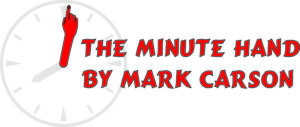Welcome to a new series of short articles about watches which should only take a minute or two to read. We will start with "Watches 101", truly the basics and build from there. There are exceptions to every "rule" but the following are generally correct and help to get the nomenclature and concepts across.
Watch Basics
Watch part names:
- CROWN - the knob which is used to set the time. On a mechanical watch it's also used to wind up the main spring which powers the watch.
- BEZEL - the ring around the dial on the outside of the watch. This may be fixed or it may rotate (diver's watches often have a rotating bezel with minute markings).
- DIAL - the "face" of the watch which usually have markings to indicate hours and minutes/seconds.
- HANDS - the analog pointers which reside above the dial. A "3 hand watch" has an hour hand, a minute hand and a seconds hand. A "2 hand watch" has no seconds hand.
- LUGS - the "horns" on the case to which a strap or metal bracelet is usually attached.
- MOVEMENT - the "engine" beneath the dial that contains the time regulation (quartz or mechanical) and gears which drive the hands.
- STRAP - a non-metal band which attaches a watch to your wrist. Often made of leather or other flexible materials.
- BRACELET - a metal band usually made with a number of links.
- CRYSTAL - the transparent cover over the dials and hands. Usually made from Mineral Crystal (which is really hardened glass) or Sapphire (which is a clear, man-made sapphire crystal that is highly scratch resistant).
Types of watches:
- QUARTZ - battery operated and time regulated via an quartz crystal, the second hand jumps from one second to the next. Generally less expensive than an mechanical watch of similar quality. Much more accurate than mechanical watches. Accuracy is usually within a few seconds per month. Quartz watches may have digital displays (such as LCD or even LEDs in older watches) or they may have analog hands. Quartz watches with analog hands are sometimes referred to as "Mecha-Quartz", but they are still "quartz watches", not "mechanical watches" despite their hands and some gears.
- MECHANICAL - powered by a main spring (no battery) and time regulated via a balance wheel and hair spring. Sweep second hand: the seconds hand makes 2.5 to 5 small movements per second which makes the hand appear to be sweeping in a more continuous motion compared the 1 second jumps on the typical quartz watch. Accuracy is usually to within a few seconds per day.
Types of mechanical watches:
- MANUAL or also known as HAND WIND - the main spring which powers the watch is wound when you twist the crown clockwise. Most affordable hand wound watches need to be wound every day to keep good time and will stop if not wound after about 2 days.
- AUTOMATIC or also known as SELF-WINDING - when worn, the main spring which powers the watch is wound by the gravity driven spinning of a weighted rotor (which is attached to the bottom of the movement). Automatic watches will be kept wound if worn daily, but otherwise, like a manual wind watch, will run out of power if not worn or wound for a day or two. Most automatic watches can also be wound by hand.
Times up! That's all for today. Stay tuned to the Hawaii Jewelers Association website for the next installment of "The Minute Hand" with your host, Mark Carson of Mark Carson / Individual Design watches.

